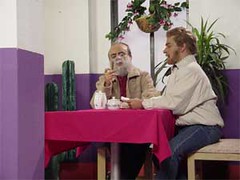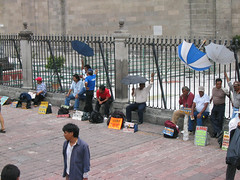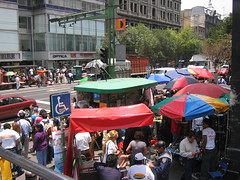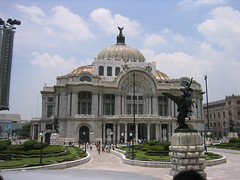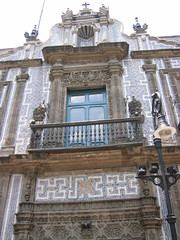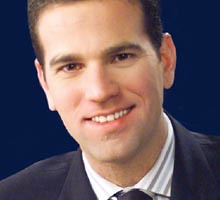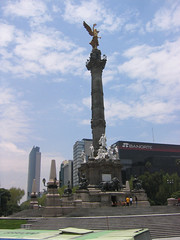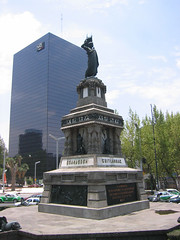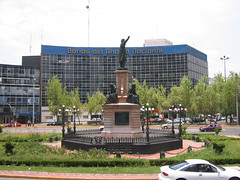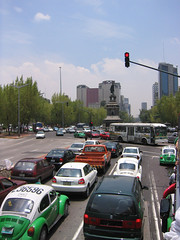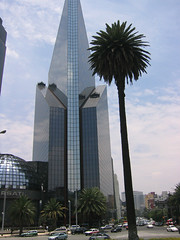Death to the Calendar as We Know It
My mother mentioned to me while we were walking the dog that it didn't really make sense to celebrate the New Year January 1st. I was a bit taken aback when she said this, since from what I've seen it's the only holiday she cares about. I'M the one who had always been saying it's just some arbitrary date. But it turns out she thinks it should be celebrated the first day of winter.
I have to say that makes a lot of sense. I mean, what the hell is up with the calendar we use? I propose some changes. I'm not talking about anything drastic, like changing the number of days in the week or months in the year, though at times that appeals to me also. Just some minor changes. Yeah...start the year the day that marks the cusp between the days growing shorter and shorter and them growing longer and longer. And how about we add a couple of days to February? I mean, why the hell does February have 28 days anyway?* There are enough months with 31 days that a couple could hand one over to good ole February. Leap year February could have 31 days. 7 months would then have 30 days, 5 31, except for leap year, when it would be six and six. You could make it so that the equinox or solstice would fall around the first or second of the month, which seems a lot tidier to me.
I also propose that we start counting the current era from 1970. Make that year zero.** Yes, it's because it's when I was born, but not because I'm some kind of egomaniac or anything, nooooo. I just want to have to dedicate the least thought possible to figuring out how old I am.
Unfortunately, things in the modern world have become so rigid and standardized that changing the calendar would be about as difficult as getting the US to use the metric system, for christ's sake.
So, uh...I guess to kind of reign myself back in to the topic of this blog I'll say something about the Aztec and Mayan calendars. The Aztec calendar is actually an adaptation of the Mayan calendar. They Mayan calendar was slightly more accurate than the Gregorian calendar. And it's very complicated, but it had three basic calendars, one based on the cycle of the Earth, one on the Moon, and another on the constellation we call Pleiades. The one used in everyday life, based on the cycle of the Earth, had 18 months of 20 days each, and then an extra 5 days at the end when you celebrated/mourned the death of the year. And one of their calendars has the new year starting the day after the winter solstice. Very civilized. But the system is way too complex. In some things the days are numbered starting zero, in others starting one. So I don't propose we use their calendar. Though they do have pretty cool names for their months.
*There's a myth that February has 28 days because Augustus Ceasar wanted his month to have as many days as Julius' month, so he stole a day from February. Even if it were true, why couldn't he have stolen from one of the 31 day months? And when did February lose it's other day? Calendar history is really fascinating. On the linked site you'll find some awesome info, such as:
1. Before the Julian calendar was introduced, priests in the Roman Empire exploited the calendar for political ends, inserting days and even months into the calendar to keep the politicians they favored in office. Tired of the chaos that this undependable system eventually gave rise to, Julius Caesar finally set out to put the long-abused calendar back on track.
2. A "tropical" year, i.e., the time it take the Earth to orbit the Sun, is approximately 365.242 days long, but this changes because of several factors, such as the gravitational pull of other planets.
3. Countries started changing to the Gregorian (current) calendar in the 1500s, though some countries like Russia and Greece didn't change until the 1900s, and the Orthodox Church in Russia still uses the Julian calendar.
4. It is a curious fact that although the method of reckoning years after the (official) birthyear of Christ was not introduced until the 6th century, by some stroke of luck the Julian leap years coincide with years of our Lord that are divisible by 4.
5. The Julian Calendar introduces an error of 1 day every 128 years, and to correct for this, when the Gregorian calendar was introduced they had to drop ten days from the calendar. (Can you imagine them trying to pull something like that now?)
6. In order to make up for the lack of days in a year that the Roman calendar had (which was a huge mess), an extra month, Intercalaris or Mercedonius, (allegedly with 22 or 23 days though some authorities dispute this) was introduced in some years.
7. Also in Roman times, leap years were considered unlucky and were therefore avoided in time of crisis, such as the Second Punic War.
8. From 1793 to 1806, France had a Republican Calendar that had 10 days in a week, 10 hours in a day, 100 minutes in an hour and 100 seconds in a minute (that really appeals to me).
**Yes, zero, not one. If we'd had a year zero, everyone could have happily celebrated the New Millennium on Jan. 1st 2000, satisfying their ignorant though more aesthetically pleasing choice without controversy.
In any case...Happy New Year's Eve everybody!


